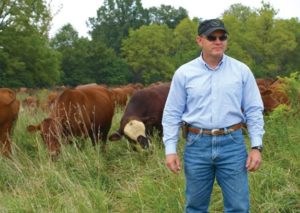
The increased production possible with Shade Haven mobile shade systems has perhaps never been as obvious as it is at Idyll Farms in Northport, Michigan. This regenerative farm grazes 120 Alpine dairy goats, whose milk is turned into award-winning cheeses in a farmstead creamery. After adding a Shade Haven SH600 to its grazing plan, Idyll was able to double the time its goats are on pasture on hot summer days.
“In the last two years, we were only able to graze two to three hours, because the goats were getting heat stroke,” says farm manager and head cheesemaker, Melissa Hiles. “Since we got the Shade Haven, we are able to graze 6+ hours per day, which is awesome!”
That extra time on pasture impacts the amount and quality of the milk. “It does help production,” notes Hiles. “I check my solids and fats and proteins. Since I’ve had my Shade Haven, I’ve seen my fats, proteins and total solids go up.”
Hiles has also observed better pasture health. “I’ve seen a difference in the density of the forage wherever the Shade Haven has been.”
The grazing plan
Idyll Farms is committed to regenerative agriculture and managed grazing on about 150 acres. After grazing goats for 11 years, Hiles determined a two-paddock-per-day mob grazing pattern works best. A side-by-side Ranger pulls the Shade Haven through the paddocks.
Hiles loves having the Shade Haven in the pasture, and the goats do, too. “They absolutely love it,” notes Hiles. “There is always one that is on the platform and refuses to get down – so she is queen of the Shade Haven.”
The goats tend to stay close to the Shade Haven – something Hiles plans to use to her advantage. “We are going to try to just move the Shade Haven and not the fences for a couple of days. We hope maybe the Shade can save us a little time while we are short staffed.”
Say goat cheese
The 500-acre Idyll Farms started with two goats and a desire to make cheese. Today, the farm’s herd consists of 120 milkers, 15 kids and ten bucks.
Hiles first made cheese on the farm 11 years ago, and her cheese quickly gained recognition. In 2022, Idyll Farms cheese won 7 awards at the American Cheese Society contest and two Best of Class awards at the World Champion Cheese Contest.
The Chilly Billy, Mont Idyll, and numerous spreadable cheeses, are sold at stores throughout the country. Details on the cheese and purchase locations are listed on the farm’s website. For those needing a quick goat cheese fix, there’s even a goat cheese vending machine on the farm stocked with a variety of Idyll Farms cheese.
Thanks to the Shade Haven along with the farm’s regenerative practices, the goats will continue to give an abundant supply of milk to produce these artisanal cheeses. “We want our pastures giving back to the milk,” notes Hiles. “The Shade Haven keeps the goats healthy and on pasture, and they produce better quality milk because of it.”












